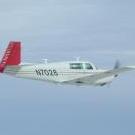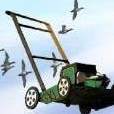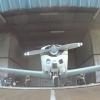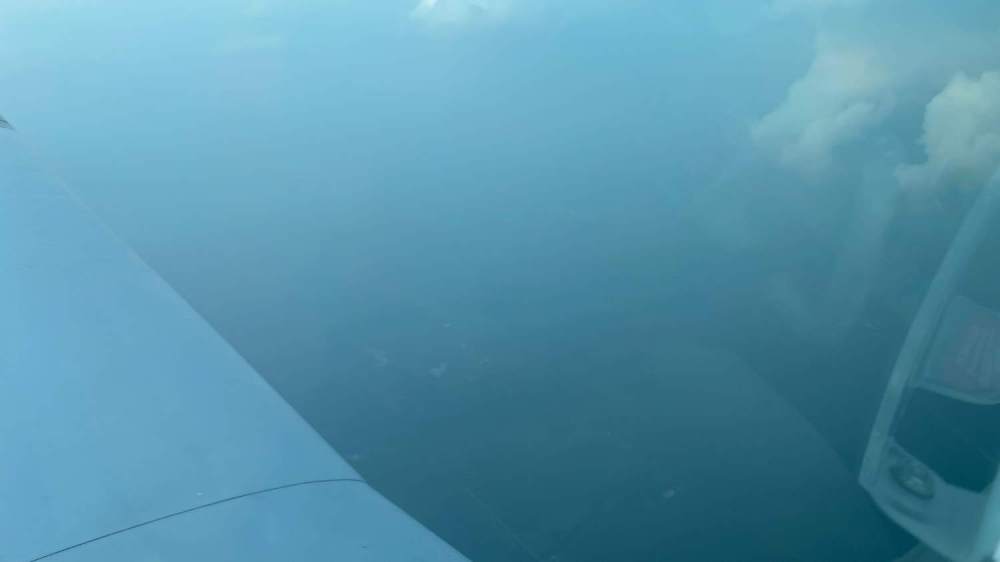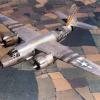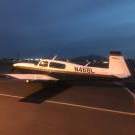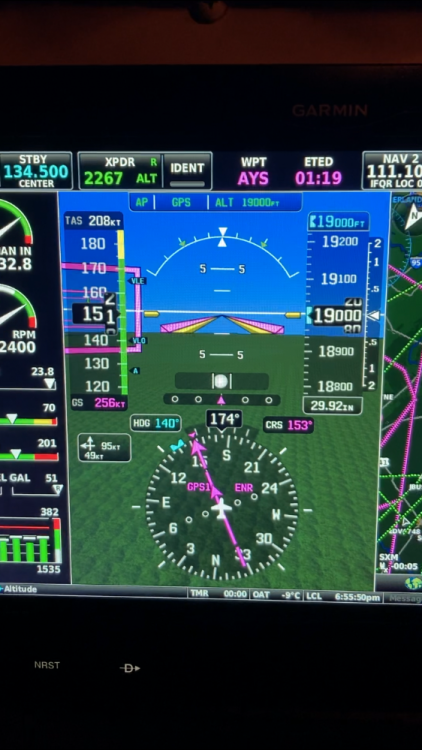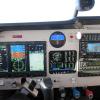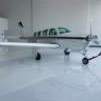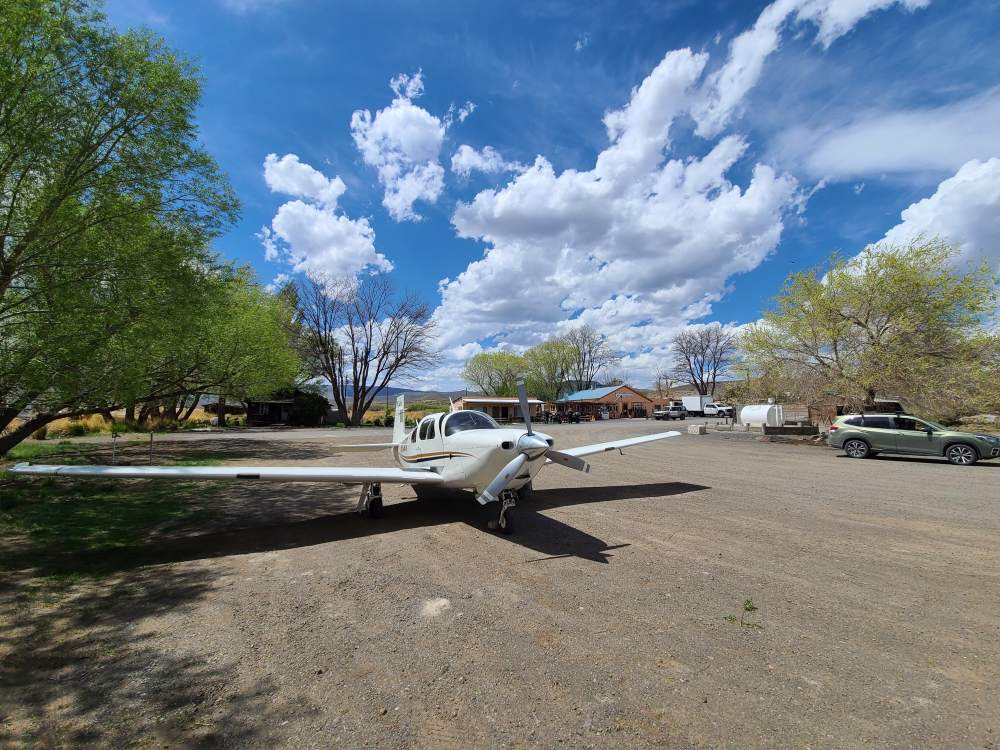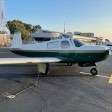Leaderboard
Popular Content
Showing content with the highest reputation on 07/23/2021 in all areas
-
I would not pass up he opportunity to fly coast to coast and back. Will you ever get the opportunity to do it again ???4 points
-
I think it is all the photo's of Chris's harem. They are large files to say the least3 points
-
maybe its just me but I hate this new forum style. I find myself coming here less and less. Why did this new format/style happen and are there any advantages to it I am not seeing?2 points
-
and the standard remove the scat tube on the muffler shroud and look for signs of leaks. borescope is your friend here.2 points
-
Insuring oneself requires walking somewhat of a fine line. We can all insure ourselves into the poorhouse. I agree that in order to avoid that the insured has to accept some reasonable degree of risk. But it should be reasonable. The person who has a net worth of 5 million is not wise to insure with a 100k sublimit. If your wife or your child was catastrophically injured or killed by a driver with that type of net worth but foolishly driving around with state minimum coverage of 25k I highly doubt you would authorize your lawyer to settle the matter for that 25k policy limit.2 points
-
That makes absolutely no sense to me, unless a "pin" is installed somewhere that prevents the landing gear from retracting at all. AD 75-23-04 makes Mooney Service Bulletin M20-190 mandatory. That SB requires removing and inspecting the landing gear actuator for worn internal gears. There is no "pin" involved, and I'm extremely skeptical that AD 75-23-04 is actually N/A to your airplane. Strongly suggest you have your mechanic research the AD and SB in detail.2 points
-
A guy in our M20J club accidentally broke the Autopilot Disconnect/Trip Interrupt switch for out King Autopilot 200. The switch C2003R is handled by Textron and sells for $99.95 each. Unfortunately the switches were backordered until mid-August and I am leaving on a cross-country trip to California next Friday. Many thanks go out to Bob Weber at webairconsulting.com 616 822 1999 for helping our mechanic figure out how to get a replacement switch. Even though Bob didn't have a switch, he helped us find one. The good thing is we have replaced the switch. The bad thing is that we had to pay $360 for it (without labor).2 points
-
I have been told there was a tubing thickness change also by a Mooney engineer.2 points
-
2 points
-
You obviously have electric gear. It indicates that you are overdriving the actuator. You need to have someone who understands the Mooney gear get it set up right.2 points
-
The bracket on the airframe which your gear actuator mounts to, is in turn mounted to the floor pan directly under the pilot's seat. As the gear goes over center, compression of the springs in the system cause the rods to compress against the actuator on both the fore (nose gear) and aft (main gear) ends. This compression, combined with the aluminum floor pan not being perfectly rigid, will cause a "bump" under your butt in the left seat. Our 1976 M20F has consistently done this for the last 16 years, through numerous gear rigging checks, with no long-term ill effects. I've come to think of it as an additional "gear is down and locked" indicator. When I put the gear down, in addition to looking for the green light on the panel and checking the floor indicator alignment bars, I expect to feel a kick in the butt. On edit: if your log books indicate recent completion of Mooney Service Bulletin M20-190 (the AD that @Ron McBride refers to), I would not do anything at this time. If there is no record of this inspection being done recently, then yes, you ought to have the gear actuator checked out. But that is true independent of the "bump in the butt" observation. For further info, see https://www.donmaxwell.com/ad-75-23-04-sb-m20-1902 points
-
Careful. The OP didn't say he had a "PC" system. He said he had a Brittain B6. That is a three-axis Brittain autopilot capable of nav tracking and altitude hold. In addition to the T&B and servos everyone correctly describes as simple, the B6 also has a control head unit full of electronics (not modern ones) with a complex rotary mode switch, as well as a complex altitude control unit, and the associated vacuum switches and relays required to make it work. Our own @211º has been through the Brittain saga, and was kind enough to collect a bunch of information from a bunch of different sources, and organize it at https://www.windfield.farm/brittain-autopilot. It's the best reference I know of on this class of Brittain autopilot. TLDR summary: it is feasible - if a little gray from a legal perspective - to patch cracked vacuum lines, re-seal servo boots, etc. But if there's an issue with the control head unit or the altitude control box, you're effectively out of luck. It is extremely difficult to get service for these modules, and any service you could actually get is one-hundred-percent not legal. Only Brittain holds the legal authority to do this work, and they're not taking any customers.2 points
-
Just watched Dr. Scott’s YT weather presentation for the day… -a-2 points
-
This is false. Depending on the policy language, yes, the attorney (and carrier) is obligated to defend the Insured until settlement or judgement or award is reached. Generally speaking, the duty to defend outweighs the duty to indemnify. The attorney hired on your behalf is more obligated to the Insured than the carrier. As you highlighted, with the excess exposure, the carrier has no more exposure with respect to indemnity. That being the case, the attorney certainly has to work with the Insured more closely. At any time, an Insured can retain their own counsel at it's own expense. Conversely, if the loss can be settled within the policy limit, the Insured is rarely consulted. The defense attorney and carrier simply work through the matter with the plaintiffs, only bringing in the Insured when necessary. Remember, settlement negotiations are to avoid litigation. Once it goes to court, the ball is out of everyone's hands. In some cases, the cost of defense can be more than the policy limit/settlement made. The carrier has a duty to settle, or attempt to settle, the claimant's claims on behalf of the Insured within the policy limits. If the claim is obviously in excess of the limit, in most states, the carrier must immediately tender the limits in an "attempt" to settle.2 points
-
I'm in Tempe, on the South side of Phoenix. If you are serious, we will have to wait a while. I have a 172 I have to get fixed up and I'm on the hook to get the 310 in my picture airworthy again, not to mention the Mooney can use some attention. I promised @Boilermonkey a gauge that I have to swap out of the Mooney this weekend. Not to mention that I have a day job who would love to have me work 60 hours a week.1 point
-
I'm starting my annual next week. My plane has been near the ocean for 20+ years. My plane has been treated with ACF-50; it bleeds ACF-50. I'm not an expert; I'm not a mechanic; I'm not a materials engineer; but I wouldn't be surprised if the aluminum sheeting doesn't look similar on a lot of these airplanes. I have no idea what aged ALCLAD sheeting is expected to look like after decades. I'm going to look closely at mine soon though and discuss findings with my mechanic.1 point
-
I had the exact same situation; an old fussy Narco. I replaced the Narco with a used but mint GTX-327 and a GDL-82 (in the tail near the battery). To minimize wiring changes, I installed a new altitude encoder with dual outputs. The GTX-327 does everything I want a transponder to do and there are infinite spares available for a few hundred dollars. I'm not sure how much I spent total, but somewhere close to $3K. If you're an EE with ET experience, buy a prefabricated wiring harness; at that point it's plug and play. You just need a shop to work with you like you said.1 point
-
SB 208 was issued to address a specific problem. If you didn't find corrosion there, it doesn't mean corrosion wouldn't be found elsewhere. What we are advocating is that due to what you showed us, I would proceed cautiously. The areas you need to be concerned with are not the easily accessible areas. It is in areas like the rear spar and other locations that you need to work to get a better view of. M20Doc and other IAs can give you an idea of where to look. As for IA opinions, I think IAs are like any other professions, you can ask 3 of them and get 3 different opinions. The one I trust is the one who understands the limits of when something is considered a problem.1 point
-
This topic of gross weight changes w.r.t Js and Rockets comes up from time to time. What is known is that all the Js that have the increase to 2900 lbs had a tube change in the cage. (The change also required remarking the airspeed indicator and checking the rudder balance). We do not know what set the limit at 2900 lbs, but after the change to the cage it was probably performance. Rocket fixed the performance with more power. Someone a while back posted Rocket STC documentation that had different GW limits depending on serial number so not all modified airplanes got the same increase. Skip1 point
-
It’s tied to the configuration module. Sent from my iPhone using Tapatalk Pro1 point
-
Wow thank you for the great advice. I will do some troubleshooting and then report back!1 point
-
My hangar neighbor has an M20A with the wooden wings, and there are no tie-down rings. He said you tie it down through the main landing gear. So that's always an option if you forget the tie-down rings.1 point
-
But his transponder is on the way out. Might as well get a waas ads-b out (better yet In and out) transponder. It's not really that much more for the Garmin 375 which has a waas gps. ads-b in/out transponder all in one. https://buy.garmin.com/en-US/US/p/5771741 point
-
No, not as good as it gets. The Bravo was meant to be flown a lot higher than 10.5. I’ve done a high power setting at 19,000 for a few minutes as a test and got around 207-209 but the fuel flow was ridiculous to keep the TIT in a reasonable range (see pic below). Around 20k at 29/24 burning 18 gph I get about 200.1 point
-
Does the iPad have an option to request the desktop version of the site? If Safari does not you might try downloading the Chrome app as I think it has that option. Not sure if that would fix it but it might be worth a shot1 point
-
1 point
-
When that film separates it's time to replace the lens. It looks horrible without the film.1 point
-
You only see the option on the desktop version of the site - and that looks like an iPad so it would be using the mobile version. It wouldn't help you on a tablet since the site is likely already using the full width of your screen. What areas have extra white space that you are referring to?1 point
-
1 point
-
Hey y'all, I just relocated my Mooney from Bowling Green KY to Lebanon Springfield today and saw a Mooney taxi past. Walked over to the fuel pump and met a MooneySpacer Dominikos flying to Ohio. Anyone bump into a fellow MooneySpacer lately? Mike1 point
-
1 point
-
You can also check and see if there is a duct that comes off the top of the right inlet scoop to the back of the avionics stack. My plane had one to cool the avionics in days gone past and I would pick up CO readings from it depending on the phase of flight. With the newer avionics it is no longer needed so I capped it off and haven't seen the readings since then.1 point
-
In mine there are holes in the floor from the footwell all the way back through the baggage compartment. The potential sources for CO entry are numerous.1 point
-
PMA has zero to do with parts produced outside of the authorized processes, such as the cables McFarlane provides under the OPP process. McFarlane very carefully points this out in a disclaimer on the part spec when getting an OPP part that the part is "not FAA approved" and the purchaser's signature certifies "that if this part is to be installed on a type-certificated aircraft it will be installed in full compliance with one of the exceptions listed in 14 CFR 21.9(a)." When you get a cable from McFarlane with a Mooney part number you do not get that disclaimer, you get an order that says "McFarlane Aviation Products FAA-PMA Replacement Aircraft Parts", an invoice with a Certificate of Conformance citing quality clauses assuring approval, and a tag on the part that says "FAA-PMA". They are very different. An FAA-PMA does not apply to all parts produced by a manufacturer with a PMA authorization, and it is important to understand the distinction. A part sourced from McFarlane under OPP has the same status as one properly sourced from anywhere else under the OPP processes.1 point
-
Not in most Mooneys. No brakes on the right side. If my wife or daughter are the ones landing the plane, somthing has gone very wrong in the left seat. The insurance company has just bought a Mooney and the landing gear are no longer required for landing. The plane will come to a stop shortly on a runway with no wheels extended.1 point
-
Have you pulled all the old duct tape on the floor and resealed with alum tape? Takes about a day. There are lots of holes around the wheel well.1 point
-
For what its worth, insure to your risk tolerance. If you have a net worth of 100K, then 100K sublimits might not be so bad, as typically, deep pockets are what plantiff slip n fall guys like to see. If your net worth is more, it might be wise to consider a higher policy. I can speak with authority it doesn't take long to rack up 1 million in a hospital from a plane accident.1 point
-
I did. And I also asked for a separate sales contract for the extra equipment vs the airplane. Saved a tiny bit of that CA sales tax.1 point
-
It is a bit odd how planes get sold… Some businesses erase all history unless it is required… and clean everything out… Some private sales the owner is no longer available… Expect personal devices don’t go with the machine… Realistically… all things are negotiable. If the seller was good about putting the ad together… he wrote down everything that comes with the plane… If using sales pics… everything in the pic is game… (when sold professionally) How’s your negotiating skills? If you are paying asking price… It is a fair question…. can you throw in the portable GPS with that? Don’t be afraid to ask… If there is a cover for the plane, it is ship specific, and won’t have much value when sold later on… Don’t be afraid to have them say no… you came to buy the plane, not all the other stuff in the hangar… The nifty headsets that cost one AMU each, that are specially wired to the panel… probably aren’t in the deal… But, if he is exiting aviation… he may add them for a reasonable price… Portable devices that are not plane specific aren’t expected to go with the plane… Ask everything up front… what is included with the sale? A good plane sales guy has a lagniappe he can toss in to ease closing the deal… PP thoughts only, not a good plane sales guy… Write everything down… nobody’s memory is that good… call it a sales agreement… The ultimate coup… the sale ends with enough friendship… when you have a question, the PO picks up the phone and answers… expect that there will be something like a switch or a light that has no explanation… Best regards, -a-1 point
-
One reason I like Garmin pilot. You save your load sheets and apply them to each flight to verify w&b for each flight. Some places I fly require a w&b submitted for each flight before release.1 point
-
This is a great conversation for everyone headed to OSH this coming week. I have weights for my wife, daughter and myself. Don't tell the girls but I added 5lbs to all of our weights just to account for daily weight fluctuations. I also have a luggage scale and have weights for everything going in the plane. We will be shipping 50lbs of stuff to OSH. It all would have fit, although not comfortably for the rear seat passenger. But I wanted to carry 50 gal of fuel. I could have gone down to 40 gals, but that would have added an extra fuel stop to the trip in order to carry legal reserves. My home field is 3900 MSL with an 11,000 MSL MEA for eastbound IFR flights. Luckily, I have a 9000' runway.1 point
-
I've owned four Mooneys (C, F, M and K) and three Baron/310s so I too have real life experience owning and maintaining these airplanes. As mentioned, two IO-470s cost about the same to overhaul as one TIO-540. I pull the power back even more than the above and burn 10 GPH per side in cruise in my Baron/310s. I burned 19.4 GPH in cruise in my Bravo. I change the oil in turbos every 25 hours, every 50 hours in normally aspirated engines. So, the engine overhaul cost, fuel burn, oil changes, etc. are a wash. The hangar is the same. Insurance is dependent on hull value. My Bravo insurance premium was much higher than any of my twins due to the hull value. I had 900-1,000 lb useful load in my Mooneys. My 310 has 1,725 lb useful load plus about six times the cargo capacity of the Mooneys. The twins climb about twice as fast as the Mooneys and at a higher airspeed. My twins have cost right at 50% more to run than my singles, lumping all 18 airplanes I've owned together. Don't let anyone convince you it costs three times as much or even twice as much. And the bottom line, if I lose an engine in cruise I have options. Each flight I have about three seconds of risk, when actions needs to be quick, not superhuman fast, just no delay in responding. For me, at this point in my life and flying career, I choose to own a fly a twin. It is OK if something else is right for others.1 point
-
I think it's good to remember that every airplane has it's own characteristics. I flew a friend's C last year. First time in a C in 25 years. First thing I noticed is that it was a lot harder (at least for me) to raise the Johnson bar gear from the left seat and that the airspeed builds quickly in the climb making it even more difficult. So, I went for the gear as soon as I was sure I was climbing. Second thing I noticed is that the CHTs went quickly over 400 unless I let the airplane accelerate, and the top of the white arc comes up quickly. So, immediately after gear I raised the flaps. The Beaver floatplane will not get off the water without takeoff flaps and will not climb well until the flaps are raised to climb. So the drill was takeoff with takeoff flaps and stay in ground effect accelerating to 80 mph while raising the flaps to climb and reducing the power to climb power. In the Cherokee (the best mannered airplane I have ever flown -- too bad they are so slow), I would take off with two notches of flap and reduce to one notch passing Vx and take off the last notch passing Vy. Skip1 point
-
My mentor instructor, who was an aeronautical engineer, said that approach flaps (takeoff flaps) provide ⅔ as much lift as drag while full flaps provide ⅔ as much drag as lift. So, gear up at 50' or no more runway to land on and flaps up no less that 300' (to account for sink when flaps are raised) or after I'm done with a takeoff turn (for added safety margin). That's the way I teach it.1 point
-
I agree with your instructor and teach rasing them based on airspeed - as soon as your airsppeed is sufficient such that you will not experience any nose drop. That airpseed varies with the airframe model but 80 kts in the mid-body's is what I teach to raise them. A second reason why I really dislike keeping them out beyond that airspeed is that once you do raise them the airspeed will accelerate in the climb and quickly allow your to get your airspeed up above Vy by a min of 10-20 kts where you're keeping the cylinders cooler with the faster airspeed and still have a great climb rate. I could go on about your reduced options if you loose the engine below the altitude you normally raise the flaps but when you think it out there is no good reason to keep them out like that.1 point
-
So… While we are remembering the times we don’t want to repeat… Just remember…. The future is yours to adjust… Following Forbes is great if you are a Billionaire… Following Buffet is pretty good too on your way to being a billionaire… Charting the cost of living has been done before around here… no big magazine required… Search for Corvettes around here… there will be threads that outline the cost of a corvette back in the day…and what one costs today… I couldn’t afford a used Corvette back then, and today… it only comes after a few other things… priorities… There are also interesting threads around here regarding how people have actually paid for their Mooney… which go back about a decade or so… So… if we want to blame somebody else about why we can’t have nice things…. Go for it… unfortunately, it won’t change anything… there are people that can afford these planes…. See what they are doing that makes that possible… I have only owned two Mooneys… they were both owned by companies or people that ran a company initially… We can blame the fed too… that is pretty easy. They pull the punch bowl away every time they increase the interest rate 1/4 of a percent… Who said that the party is over? Don’t look that up, it isn’t required… it won’t help either… Pulling the punch bowl away only lasts a short period of time… the party continues on… It is a problem for individuals similar to when the fed lowered interest rates…. Nobody called it for what it was…. It is putting the punch bowl back out… for people who use the opportunity wisely… It takes time to save enough money to buy a plane…. Or… It takes time to pay off a plane loan… Get to know how interest affects everything…. Over time. Get to know how inflation affects everything… over time Get to know how to save… Get to know how to invest… Did you know… the calculation to determine how long it takes to double your money based on the interest rate your investment has? (The rule of 72) The S&P has gone up 10+% on average every year since before the Great Depression…. There are hints thrown in around here by how individuals do this… Know that there are experts in this field that are worth consulting with… In the 70s… I knew a guy…. He bought a boat… after a couple of years he bought a bigger boat because he ‘made’ money on the one he owned…. The bigger boat would earn him more… sounded good… Inflation was mixing up the logic the guy had… he wasn’t really earning money on the boat above the inflation rate that was taking the value away… In the end… he got tricked by inflation to spend more than he really wanted to… Keep both eyes open…. The rules don’t change…our understanding of the rules are what’s important… As far as an M20J being a low cost plane…. A handful of M20J-ATs were sold to universities…. Compare that to the cost of an M20S… the stripped down version of the M20R… Nearly the same number of parts… nearly the same number of hours to build… nearly as much complexity to manufacture… A few hundred more pounds of materials… a couple of more cylinders under the extended cowling…. Trim all you want…. There isn’t a way for Mooney to produce a decontented stripper into an affordable airplane… Affordable Mooneys are of the pre-flown variety… Affordability increases as your nest empties out… grow the children faster more efficiently…. Write a book about how you did it… do presentations on YouTube…. Gain followers. Strange stuff I learned about while reading MS endlessly… from other PPs… some had retirement planes, others ran their own businesses… Its not about the money… it’s what you do with it… that can make a difference… Life can be challenging… being part of a community can help… PP thoughts only, not a finance guy… Best regards, -a-1 point
-
Got to go on a trip out to moab and bend, and while I was there, stopped at a couple uncharted strips. First one was fields for the second time in southern oregon. Second one was later today at panoche valley. A smaller 2000ft grass/gravel runway in central california just south of mercy hot springs.1 point
-
1 point
-
They're small tube pointing into the wind on the bottom of the wing to the side past the tank. In the modern Mooney's they are in a small NACA duct embedded into the wing bottom pointing into the wind. Vintage Mooney's they can be aluminum tubing come down and making a 90 bend into the wind. Those with bladders will see a de-ice mast directly in front of the vent tube. This usually happens from insects nesting in the tubes when parked on the ramp. I personally wouldn't insert something as large as a allen key wrench into the vent tube. Instead I recommend using some .032" safety wire to wiggle it in the tube and break up any debris without allowing any chance of ramming it further back into the vent or give it any chance of getting sucked into the tank by the vacuum. I fear the tool will break it up by pushing most of back in, rather than allow it come out. I can probably get a picture of a modern one later today.1 point
-
1 point

